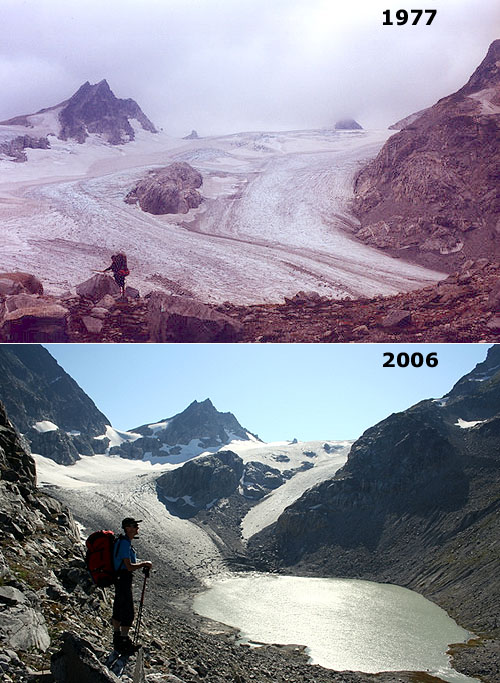
Glaciers respond to climate in an attempt to achieve equilibrium. A glacier advances due to a climate cooling/snowfall increase that causes positive mass balance. A climate warming/snowfall decrease leads to negative mass balances and glacier retreat. To reestablish equilibrium a retreating glacier must lose enough of its highest ablating sections, usually at the lowest elevations, so that accumulating snows in the near the head of the glacier once again are equivalent to overall ablation, and an equilibrium balance is approached. If a glacier cannot retreat to a point where equilibrium is established, it is in disequilibrium with the climate system. A glacier that is in disequilibrium with present climate will melt away with a continuation of this climate. Four lines of evidence indicate that many North Cascade glaciers are currently in a state of disequilibrium. One key factor identifies those in disequilibrium-the thinning of the glacier along its entire length.
1. glacier thinning in the accumulation zone is incompatible with glacier survival as this indicates the glacier has no consistent accumulation zone, this thinning is evident in glaciers where the head of the glacier is retreating and new rock outcrops are appearing in the accumulation zone. This is occurring on 10 of 15 North Cascade glaciers surveyed in detail in 2007.
Published paper on Glacier Survival Forecasts
2. Longitudinal profiles completed in 1984 and 2005 on twelve North Cascade glaciers indicate substantial glacier thinning in the upper portion, accumulation zone, on nine of the twelve glaciers. This amount of thinning indicates that the glacier no longer has a substantial accumulation zone. When glacier thinning is substantial in the accumulation zone and comparable to the ablation zone it indicates that there is no point to which the glacier can retreat to achieve equilibrium.
3.Annual balance measured on nine glaciers yields a mean cumulative annual balance for the 1984-2006 period of -12.40 m w.e, a net loss of ice thickness exceeding 14 m. This is a significant loss for glaciers that average 30-50 m in thickness, 20-40% of their entire volume lost in two decades.
4. North Cascade glacier retreat is rapid and ubiquitous. All 47 monitored glaciers are currently undergoing a significant retreat or have disappeared in the case of three of them. Two of the glacier where mass balance observations were begun, Spider Glacier and Lewis Glacier, have disappeared. This retreat on eight Mount Baker glaciers since 1984 that were advancing in 1975 averages 340 m. The data indicate broad regional continuity in glacial response to climate.
Response to Climate Change
Since the maximum advance of the Little Ice Age (LIA) there have been three climate changes in the North Cascades sufficient to substantially alter glacier terminus behavior.
This first substantial climate change was a progressive temperature rise from the 1880’s to the 1940’s. The warming led to ubiquitous rapid retreat of North Cascade Range alpine glaciers from 1890 to 1944 (Long, 1955; Hubley, 1956). Average retreat of glaciers on Mt. Baker was 1440 m from LIAM to 1950, and of 38 North Cascade glaciers monitored across the range, 1215 m (Pelto and Hedlund, 2001).
The second substantial change in climate began in 1944 when conditions became cooler and precipitation increased (Hubley, 1956). Many North Cascade glaciers began to advance in the early 1950s, after 30 years of rapid retreat. All 11 Mount Baker glaciers advanced during this period (Hubley, 1956; Harper, 1993).
The third change began with warmer and drier conditions in 1977 (Ebbesmeyer et al., 1991). By 1984, all the Mount Baker glaciers, which were advancing in 1975, were again retreating (Pelto, 1993). Between 1979 and 1984, 35 of the 47 North Cascade glaciers observed annually by NCGCP were retreating. By 1992 all 47 glaciers termini observed by NCGCP were retreating (Pelto, 1993). The average retreat from 1984-2004 of Mount Baker glaciers is 297 m, and on all 47 North Cascade glaciers it has been 137 m.
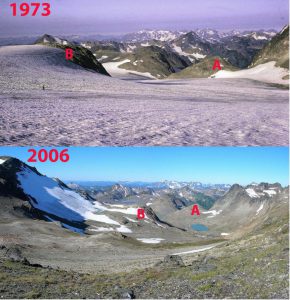
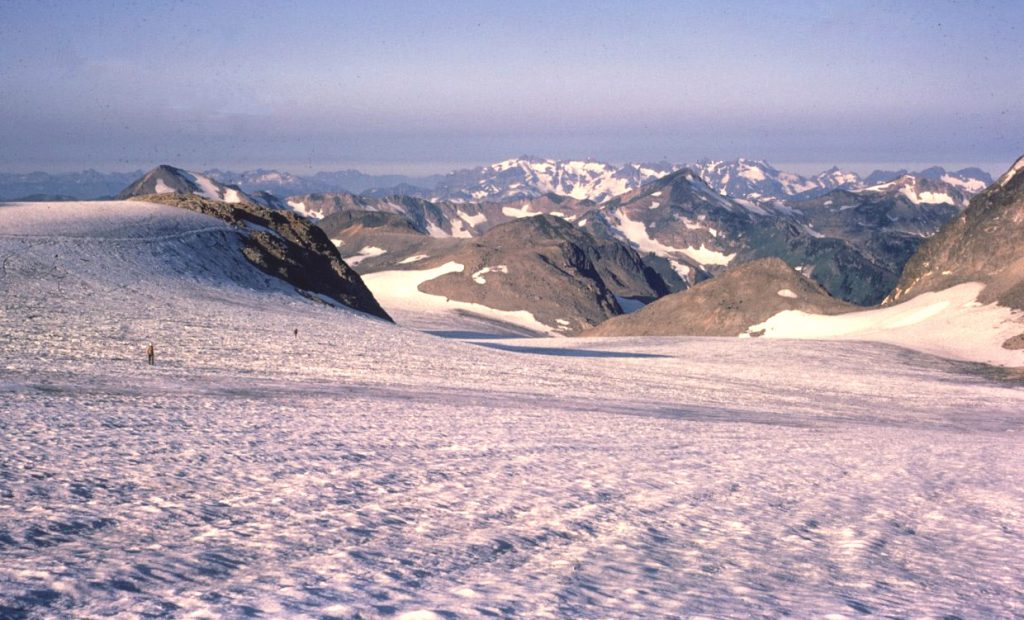 Above is the Whitechuck Glacier in 1973 and 2006. The branch of the glacier has disappeared. The lack of crevassing and thinning along its entire length was evident in 1988, indicating glacier disequilibrium, and that it would melt away.
Above is the Whitechuck Glacier in 1973 and 2006. The branch of the glacier has disappeared. The lack of crevassing and thinning along its entire length was evident in 1988, indicating glacier disequilibrium, and that it would melt away.
By 2000,four glaciers had disappeared Lewis Glacier, Spider Glacier (Right), David Glacier and Milk Lake Glacier (below) (Pelto and Hedlund, 2001). Spider Glacier is shown at right. The current retreat is not confined to the terminus of glaciers. The head of many glaciers is retreating downslope as well. On Ice Worm Glacier the head of the glacier has retreated 160 m and the terminus 144 m during the 1984-2005 period. This retreat on eight Mount Baker glaciers from 1984-2004, that were advancing in 1975 averages, 340 m. The rate of retreat has accelerated since 1998
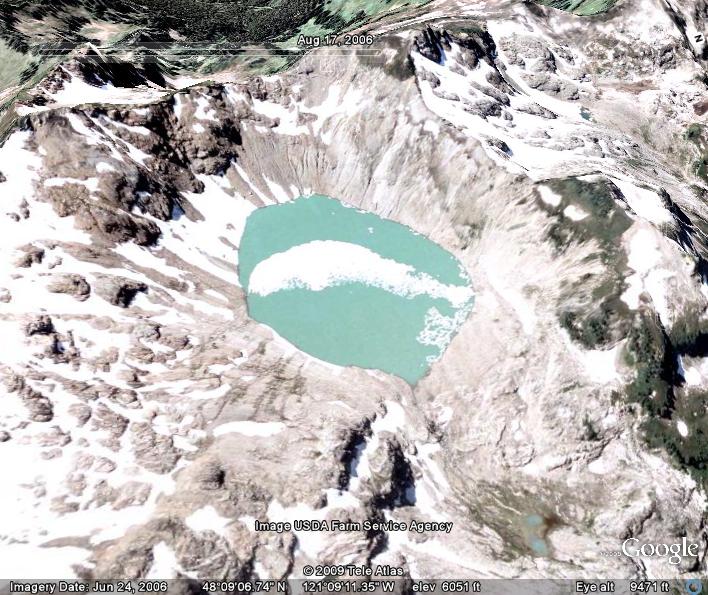
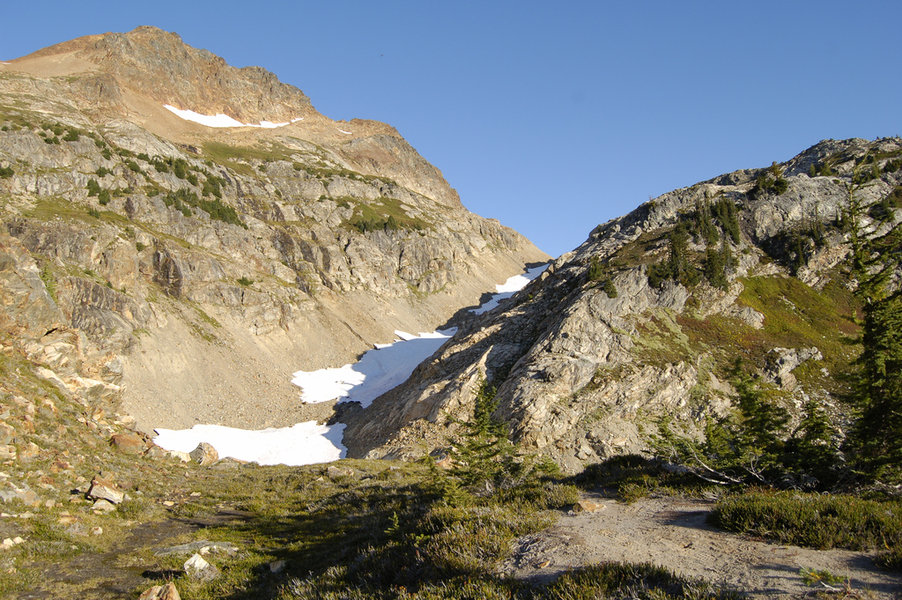
The Lower Curtis Glacier on Mount Shuksan advanced from 1950-1975 and has retreated 184 meters from 1987-2004. A longitudinal profile up the middle of the glacier indicates that it thinned meters from 1908-1984 and 6 m from 1984-2002 . The thinning has been as large in the accumulation zone as at the terminus, indicating no point to which this glacier can retreat and achieve equilibrium with the present climate.
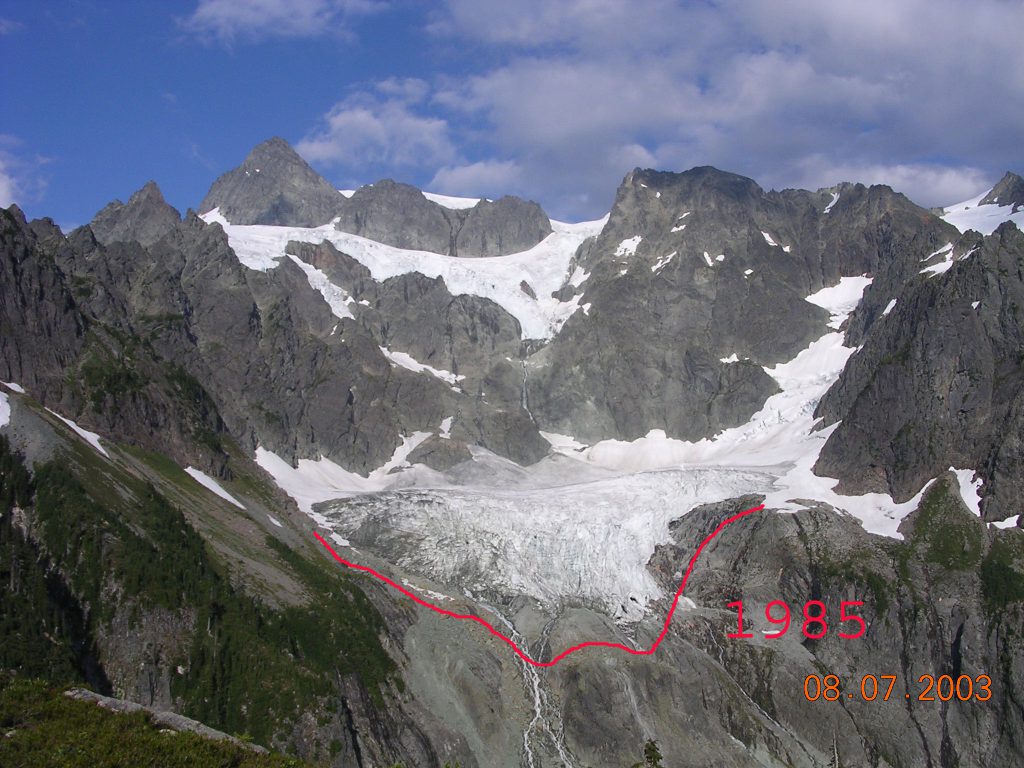
Lower Curtis Glacier in 2003

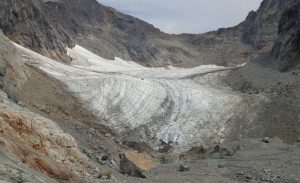
Columbia Glacier in 1989 (above) and 2015 (below)
The Columbia Glacier near Monte Cristo has retreated 135 meters from 1987-2004. A longitudinal profile up the middle of the glacier indicates that it thinned meters 57 m from 1911-1984 and 8 m from 1984 to 2002 . The thinning has been largest in the accumulation zone since 1984, indicating no point to which this glacier can retreat and achieve equilibrium with the present climate. Below is the Boulder Glacier which advanced from 1958-1980 and then began retreating slowly until 1992, when retreat became rapid.
Conclusions
The recent 0.6oC temperature rise and 25 % reduction in mean April 1 SWE in the North Cascades have resulted in evident disequilibrium of North Cascade glaciers. Mean annual balances of North Cascade glaciers have average -0.41 m/a over the past 21 years. The net loss is a significant portion of the total glacier volume, 18-32%, resulting in substantial retreat and thinning. The retreat is ubiquitous, rapid and increasing. There is no evidence that North Cascade glaciers are close to equilibrium. Their ongoing thinning indicates that all of the glaciers will continue to retreat in the foreseeable future. In cases where the thinning is substantial along the entire length of the glacier, than no point of equilibrium can be achieved with present climate and the glacier is unlikely to survive.
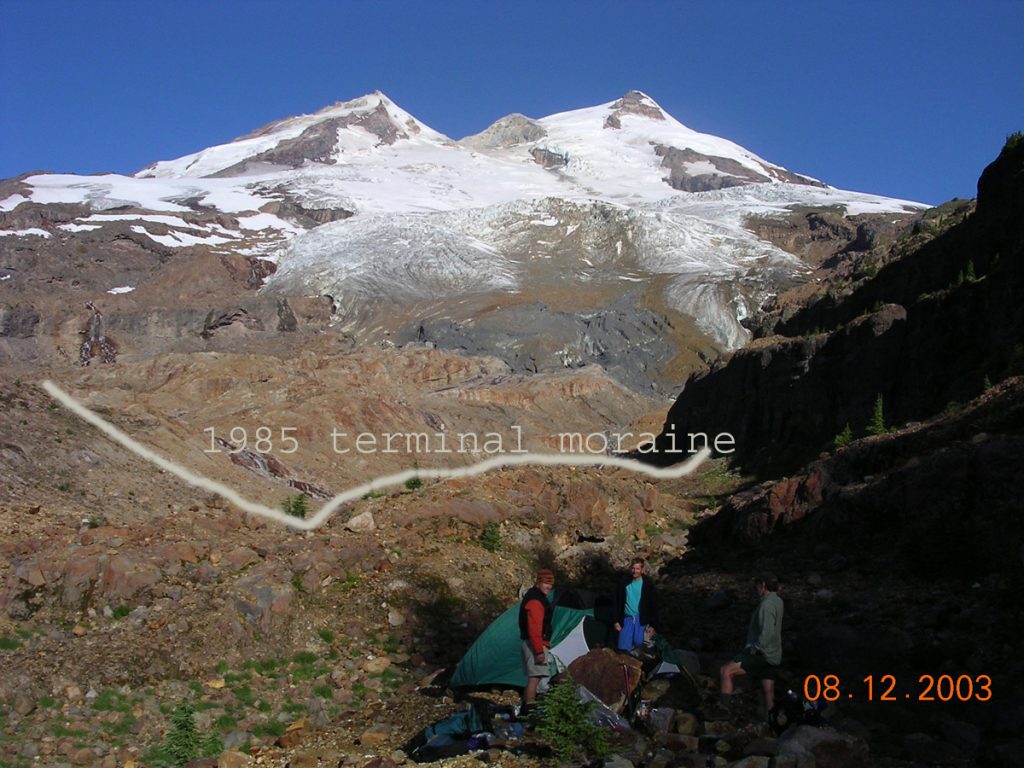
Boulder Glacier in 2003 retreating from the 1985 advance moraine.
The Full paper is in Hydrologic Processes.